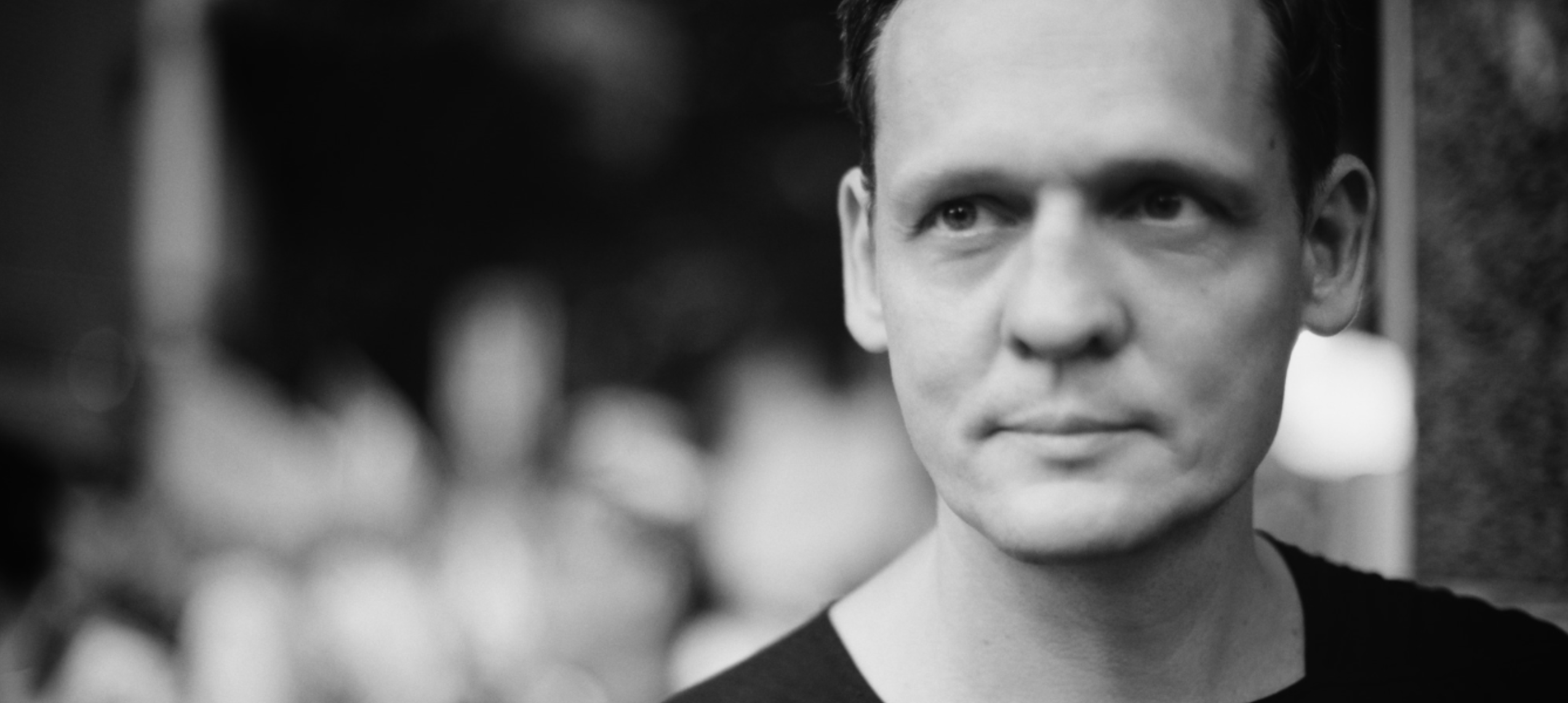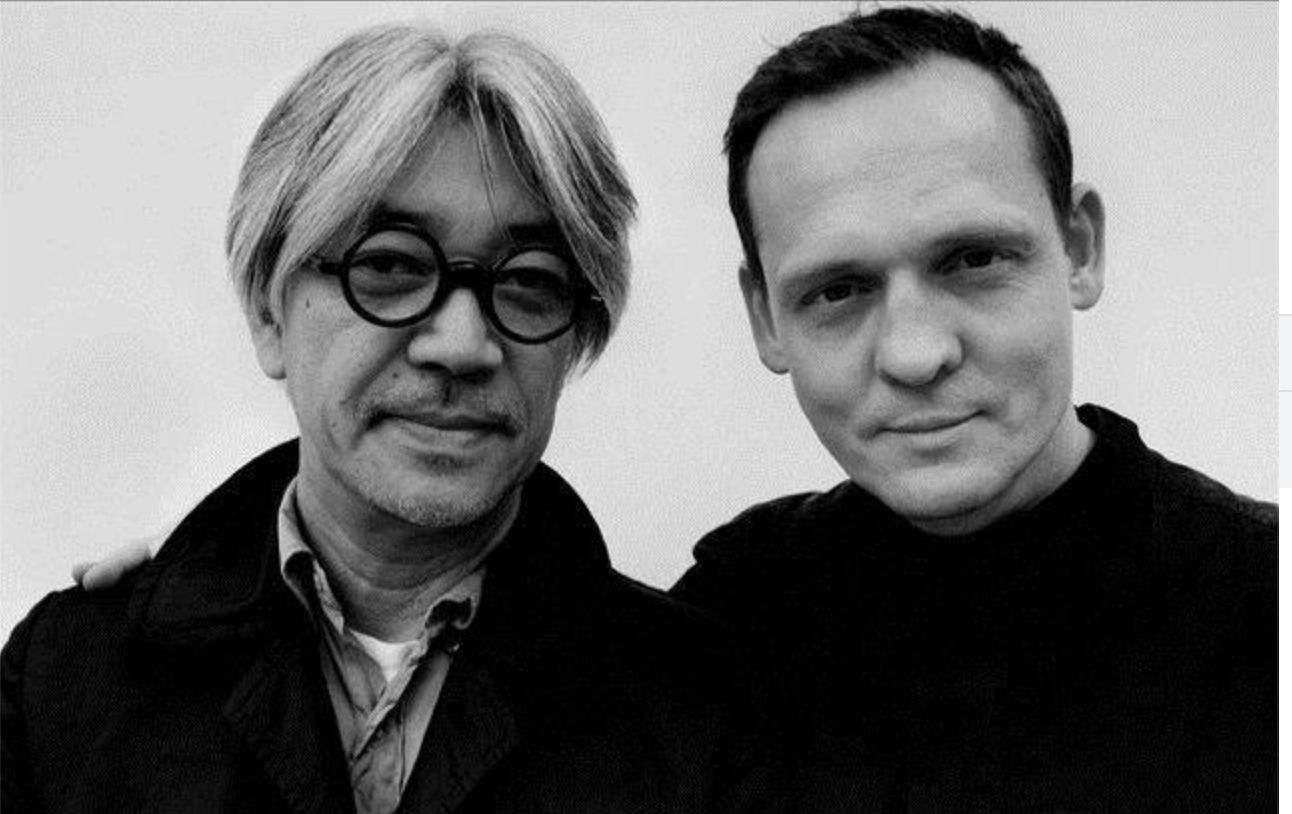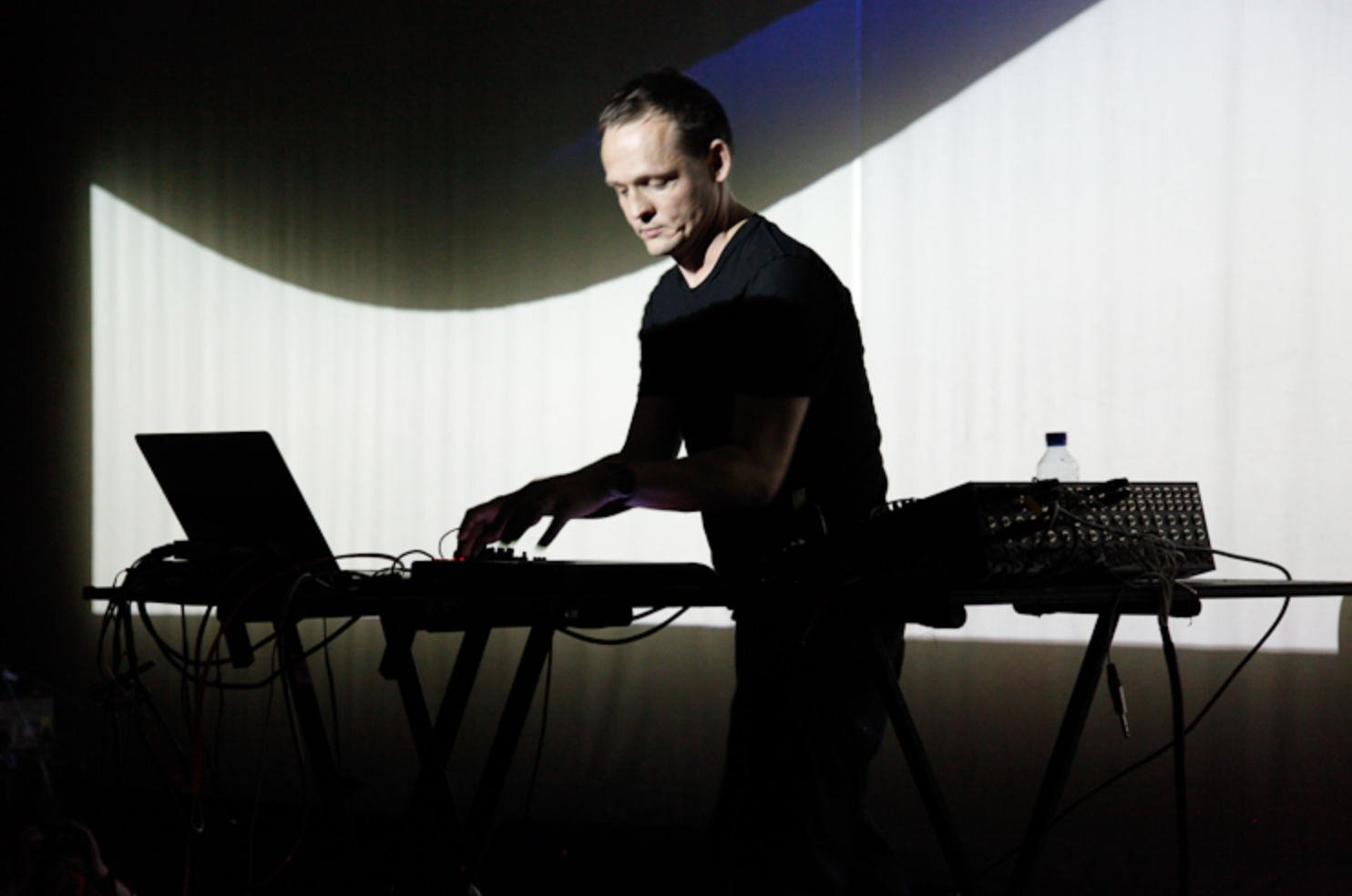Ask the Experts: Alva Noto
The pioneering sound designer steps up to answer your questions.

Ask the Experts: Alva Noto
The pioneering sound designer steps up to answer your questions.

Carsten Nicolai, better known as Alva Noto, has answered your questions this month.
Nicolai, born September 18, 1965, is considered one of the most important sound explorers of recent times. A former Architecture student and a visual artist interested in the physical qualities of sound, the German musician is part of an artistic movement whose work explores the intersection between art, science, sound, and music, with a strong adherence to reductionism. Adopting the Alva Noto pseudonym in 2000, he’s worked on many projects, both on his own and with other artists including Ryuichi Sakamoto, Bender (Diamond Version), Bretschneider (Signal), Blixa Bargeld (NBBA), and Ryoji Ikeda (Cyclo), to name a few.
As a musician, capturing the scope of Nicolai’s work is no easy task given his list of releases, exhibitions, and more. He co-founded the groundbreaking raster-noton label (having founded NOTON in 1994) just before the turn of the millennium, and has since performed and created installations in some of the world’s most prestigious spaces, including the Guggenheim, New York and London’s Tate Modern.
In terms of releases, he’s shared material via Mille Plateaux and raster-noton. It is here that he has released some of his most defining and widely known work in collaboration with Ryuichi Sakamoto—with whom he also composed the soundtrack to the 2015 film, The Revenant, which received 12 nominations for the 2016 Oscars. Their latest collaboration, Glass, landed recently; and Nicolai’s latest album, UNIEQAV, arrived on March 16.
Nicolai also works as a visual artist, known for his elegant yet minimalistic aesthetic. After participation in important international exhibitions like documenta X and the 49th and 50th Venice Biennale, Nicolai’s works have since been shown worldwide in extensive solo and group exhibitions.
What was your approach for processing Sakamoto’s piano on your collaborations?
Each record has a different approach. I was very shy with the processing of the first album; I didn’t process his sounds so much but in the later collaborations I have taken a more radical approach, mainly because Ryuichi was interested in and open to me processing it more.
In collaborations, you need to establish a common ground and a certain trust with each other, and over time Ryuichi and I have established this, so I think we’ve started to give each other a lot more space when it comes to our work together. I think much of this is down to our live shows that we’ve done together because this relies a lot on improvisation and processing things in a more experimental way. It’s taken a long time; we’re talking about many years—but now we’ve established it we want to explore ways to improvise on that common ground. Ryuichi describes our collaboration as he delivers the fish and I am the sushi knife. It is the perfect combination for good sashimi!
The latest release, Glass, is just a manifestation of this. It’s different in a way because I am not processing anything. We’re just playing together. I think this is a completely new step. To begin with, for our first release, we were separated. Ryuichi was dedicated to the piano and I did electronics, but on Glass there is no piano.
I’m fascinated by the textures and attention to detail in your music. Do you find yourself absorbed in your work when you’re recording?
My recording process is extremely immersive. I think every recording process is that way. I become completely obsessed with this sound and vision I am trying to achieve. With all the possibilities today, you have to work intensely. You have to isolate yourself and spend time in the studio listening to material and just trying things. It takes a lot of time—at least eights hours a day, for me. When I’m in the zone it feels like I am floating. I can be there for a whole day and then when I leave it feels like only one hour has passed.

I would like to ask a question about labels and publishing. We’ve had offers for our music by minor labels, but these options end up being financially unsustainable, and also by publishing on various internet portals (Soundcloud, Bandcamp, etc.) we feel our work would be lost at sea. What would be your suggestion for sharing this music, and what should we do to promote our work? Do you think we should perhaps open up our own label—and is this better than releasing on a label with a strong reputation?
It depends a little bit on what you’re doing. If you feel very drawn to a label and your music feels like a perfect fit, then you should, of course, contact these people and send in your music. Don’t give up if you feel it’s the right place. However, most artists, especially experimental artists, have a feeling that they are doing something that doesn’t fit in easily with the output of an existing label, so, in this case, I think it’s best to start your own label. This is especially true nowadays because it’s so easy to find new music with the internet and social platforms. However, you should first invite your friends to listen to your music and build a community; it’s important that you do not produce for a market or with the intention of making money out of it. If you’re focused only on commercial success then it becomes very hard to find it. Find people who appreciate what you’re doing. As I said, this is easy today because there are so many platforms where you can share your music.
That’s how we did it with Raster-Noton. I never even thought or trusted that the results would ever come. It was just a natural development that we found people who kind of liked the music we were making. We just thought we were a small group of people doing what we were doing, and then people discovered it naturally. It was a small community and it took years for a wider audience to develop. You need to be patient, and your expectations must not be too high. It’s a very strange moment when you realise that your audience is a lot bigger than you thought. As an electronic music producer, you can feel quite isolated and then when you get feedback it’s so strange.
I also think that starting your own label is good in the long run because you will retain control over your music. The music industry generates a lot of money but it doesn’t give back to the creative people—the most important people. Let’s make a simple example: in Europe, a CD costs around 18 euros. If the artist is lucky, they’ll receive just one euro. It means that only a small percentage of what the consumer pays ends up in the hands of the creator. The music industry has built a system that is not very transparent and one of the reasons it’s not transparent is because there are a lot of people who are involved in the musical work. Independence gives you a lot more freedom and flexibility. Maybe this stops you from using certain tools and platforms to find success, but in my case it was very easy because my music has never been for a wide audience. It was just natural to release my music on my label.
I actually think that the music industry is undergoing a big shift that is not finished yet. People are beginning to prioritise independence and this, in turn, gives creators more of an opportunity to make a living from their work—from their musical creations. If this doesn’t happen then a lot of the creators will eventually disappear.
How do you approach composition, in general? What inspires you, workflow, state of mind, etc?
I am very inspired by visual imagery, especially film. I am also fascinated by non-musical sounds, like noises and auditory accidents. I am also inspired by architectural drawings.
I would also say it depends on the project. When I start an album or a release, I normally begin by sketching (sonically) what I would describe as an atmosphere, which itself stems from a picture or a metaphor. This could be a little clip or a still image. One time, for example, I started with a clip from a science fiction movie. It was not an important scene; it was just a side view of a control room—and I went back and looked at this scene to refocus my mind on this atmosphere upon which I was basing the music.
Sometimes I can also do rough sketches and I compile them into a kind of compilation, like a demo tape, and then I try to stay within this realm—or general atmosphere. It’s difficult to describe. It’s sort of a vision that’s not easy to express visually. In fashion, they’d call it a mood board. Often these visions will come from architectural drawings, for example, those of Daniel Libeskind’s “Micromegas,” and that will become the reference point for the entire release. It’s like I am creating a soundtrack for that vision. It’s a bit like someone is sending you a postcard and I am making a soundtrack for that postcard. This vision is in my mind’s eye rather than something I can actually draw.
Looking back at my discography, I can go back to each release and identify a clear visual aesthetic that I wanted to achieve at the time. Listening to that music then brings the spirit of that image alive again. While listening, I can clearly recall exactly what I was thinking and seeing at that particular time.
For the new album, the vision is a little different because half of it came from a sort of live set. The first time I played one of the album tracks was in Berghain, here in Berlin, and this triggered the vision; I knew then how I wanted the album to sound. I know the acoustics of the space very well, and it’s a great place for listening to sound. The album was inspired by a certain moment of the night; I had a certain feeling where I felt really together with the audience. I was then intent on recording a soundtrack for that vision, or for that particular moment.
How does your approach for soundtracks differ from that for your own releases, and can we expect more work with films from you?
For The Revenant, and I guess for all soundtracks, it’s different because you’re a bit like a servant. What you do is get really into that topic and try to become one of the characters inside the movie. With The Revenant, it was a super compressed and intense period. I was in Los Angeles and I was only immersed in the movie; all my time was dedicated to it. I’m not sure when I’ll do it again. I’ve had offers and I’ve worked on two projects like this before, but it depends on whether I can visually see a connection to myself in the film. If I can connect then I will perhaps do another one.
Having been published on the Mille Plateaux label, is philosophy an important source of inspiration in general?
Not really. In the beginning, Mille Plateaux was just a name. Not everybody who released on the label was necessarily connected to the French philosophers. I know that Achim Szepanski, who founded the label, studied some philosophers from the Frankfurt school so I think he was inspired by this when it came to the running of the label. Maybe the overall structure of the label was influenced by this but only a few of the releases on the label were actually aligned with this particular philosophical concept. I connected with the label via an invitation from Achim who was always looking for new material that had a visionary and futuristic aesthetic, with a new approach to sound. Yes, I think this is more the main topic rather than the philosophy behind the name Mille Plateaux.
Someone once commented that the music of Noton is made to be enjoyed “whilst on drugs.” What is your view on this, and what kind of “zone” do you put yourself into when actively listening to your own / your label’s music?
I don’t personally take drugs, especially not for working, because my biggest drug is the music. The music has to create that feeling, I think. People sometimes tell me that my music sounds good on drugs but I really don’t have any idea because I have never experienced it. That being said, I find it is interesting to read people’s descriptions of what they experience while listening to my music on drugs.
How did you get to know Mika Vainio? How would you describe him as a person and collaborator?
I met him for the first time in New York when he was performing with Ilpo as Pan Sonic in a small techno club in late 1996. I then visited him in Turku in Finland and we worked together on the soundtrack installation called “Micro Macro.” Later, we both lived in New York and started to work at a mutual friend’s analog studio.
Mika was a concentrated and dedicated worker, I have to say. He had an incredible ear and we both really enjoyed working on music together. One of the key things about our relationship was that we were always learning from each other. By working with him, you learned a lot about silence and space. Maybe the most amazing thing for me was how he could find beauty in any sound. He gave a lot of attention to sounds that you perhaps wouldn’t give any attention to in the first place.
As a person, Mika was not a man of many words but once you became close to him there was a very generous and funny person with a great sensibility for art, sound, and food.
Once, I’ve seen you performing in Barcelona, at the Espai Jove La Fontana. There, you were playing together with Anne-James Chaton and Andy Moor. When the performance finished, Anne-James and Andy Moor stayed to receive a big applause for that great music, but, instead of this, you went directly off stage. If you feel comfortable, could you explain what happened to you at that moment?
I don’t like the classical approach to collecting applause. I feel ok on stage as a performer but I am a little bit too shy to collect applause. I am not interested in this part of being a musician.

Could you tell us more about your process of taking your compositions to live performances?
I don’t use or own too much outboard gear so I can actually take a lot of my studio with me when I go on stage. Therefore, the focus is not on compressing my studio setup but rather on solving problems, simply because there are things I can do in the studio that are not possible in the live environment. To do this, I work with my assistant, Nibo, to build instruments, both software and hardware, that will serve a specific purpose in my live set. Where necessary, we will program Max for Live and build stand-alone applications for the live set, even if they’re only used for one or two songs. It’s a lot of effort for only a little use, but it’s important for me to work.
One example of this is a live analysing tool that Nibo and I built. It also functions as a sine wave generator. Its purpose is to analyse what Ryuichi plays, in this case, and then it gives me a precise frequency of the decay of the tone. I then have a choice on which sine waves I am going to add, lower or higher. I can do this in my studio, in an offline situation, but it’s not possible to do it live on stage.
I also use these instruments for making sounds. Nibo made a piece of software that allows me to make sounds outside of what a synthesiser can do. These sounds are mathematically possible but not possible with a normal synthesiser. We also developed a sample bit crusher that loops the sample and I can define how often and in which way it gets crushed. It’s like a copy machine, where you can copy the copy and copy it again. I can try different loops out and change them every time. This is also more for recording purposes.
I was wondering what percentage of your creative process is sound design, and what percentage is composition, and what percentage is mixing and technical aspects. I constantly find myself getting away from what feels musical when working with electronics and getting caught up in the technical details.
For me, the term “sound design” is a tricky one because I don’t make a distinction between sound design and composition. The mixing and technical aspects are also part of my process and a crucial part of composition but it does not take too much of my time. I tend to use instruments that I am used to using, having worked with them for a long time. I think every musician has their favourite tools and you have to understand that more complex instruments require more time to learn, and you have to put the time in to learn them. For me, one of my main tools now is editing. I’ve become a very fast sound editor. When trying to solve a problem, I will always think about editing a sound rather than trying to recreate it.

